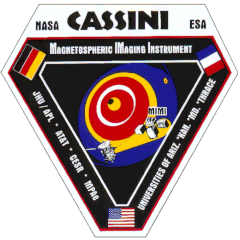Cassini MIMI Investigation at Fundamental Technologies
Numerical Computation of Energy-Dependent Geometric Factors of E and F Electron Detectors of CASSINI/MIMI/LEMMS
Technical Report by Xiaodong Hong and Thomas P. Armstrong, May 10, 1997
Appendix D Program Explanation and Source Code
Most of the code in this project is adapted from Buckley's and Hong's theses. Traj4pt is the main program to trace the trajectories of the electrons. It needs the following programs to compile with: Chechitsen8.for, Trajrt4bdet.for, Tracksub4.for, Fdmod5.for, and Timer.for. Most of the program names are retained except the variation of the number. For example, Chechitsen8.for is the modification of Chechitsen4.for to check the impact on the Cassini/MIMI/LEMMS. Two subroutines have been added. One is wallcheck, which checks if an electron hits the walls or the plane on which the open aperture channels are mounted. If it hits the open aperture plane and exits through one of the aperture channels, one needs to check the trajectory with the polygon planes of this particular channel using subroutine channelcheck.
To run Traj4pt one must compile and link all programs mentioned above. Shown here is a brief description of what is needed for the input data once Traj4pt is run. For detailed descriptions please refer to Buckley's and Hong's theses.
ENTER THE CHOICE OF MODEL OF THE
SCATTERING
NON SCATTERING----------------> 0
SPECULAR SCATTERING--------->1
DIFFUSE SCATTERING------------>2
Input one of the numbers to select a particular
backscattering mode.
ENTER THE NAME OF THE FILE OF COORDINATES
Input coordc.dat
ENTER THE NAME OF THE FILE OF COEFFICIENTS
Input coeffc.dat
ENTER THE INITIAL COORDINATES OF THE e IN cm/100
Input the starting coordinates in cm/100
ENTER THE LOWER BOUND ON TIME
Input 0
ENTER THE UPPER BOUND ON TIME
Input a long time (1 or 2 seconds would be good)
ENTER THE TIME STEP
Input the time step in which an electron moves according to
the differential equation solver. The time step must be
chosen in such a way that it won't take too much time but
will get an accurate trajectory.
ENTER THE ERROR BOUND
The selection of error bound is about 100 of the time step.
ENTER THE ENERGY OF PARTICLE IN MEV
Input the value as instruction
ENTER MID. THETA, THETAMAX, DEL THETA
Input the values of the range of the polar angle
ENTER MIN. PHI, NO. OF STEPS, DEL PHI
Input the values of the range of the azimuthal angle
An output file records the escaped electron's starting polar and azimuthal angles for the particular coordinate and energy. One can use the files to calculate the geometric factor for a particular energy after the program has run through all small areas.
Traj3pt.for with Chechitsen8.for, Trajrt3bdet.for, Tracksub3, Fdmod5.for, and Timer.for would record the coordinates of the trajectories. It is modified from Buckley's Traj2pt. The difference between Traj4pt and Traj3pt is the output files. Traj3pt records the coordinates of the trajectories which produce the graphs in Appendix C.
To extend this program to consider the backscattering electron effect, one needs to add refsub4.for and modify the code of chechitsen8.for and trajrt4bdet.for. See Hong's thesis for further information.
- Traj4pt.for
- Chechitsen8.for
- Trajrt4bdet.for
- Tracksub4.for
- Fdmod5.for
- Traj3pt.for
- Trajrt3bdet.for
- Tracksub3.for
Return to Technical Report Table of Contents
Return to Cassini
MIMI table of contents page.
Return to Fundamental
Technologies Home Page.
Updated 8/8/19, Cameron Crane
QUICK FACTS
Mission Duration: The Cassini-Huygens mission launched on October 15 1997, and ended on September 15 2017.
Destination: Cassini's destination was Saturn and its moons. The destination of the Huygens Probe's was Saturn's moon Titan.
Orbit: Cassini orbited Saturn for 13 years before diving between its rings and colliding with the planet on September 15th, 2017.



